
Subscription Offers
Give a Gift


Britain's Gypsy Travellers: A People on the Outside
Despite the popularity of shows like My Big Fat Gypsy Wedding , Britain’s Gypsy Travellers still face longstanding prejudice, warns Becky Taylor.
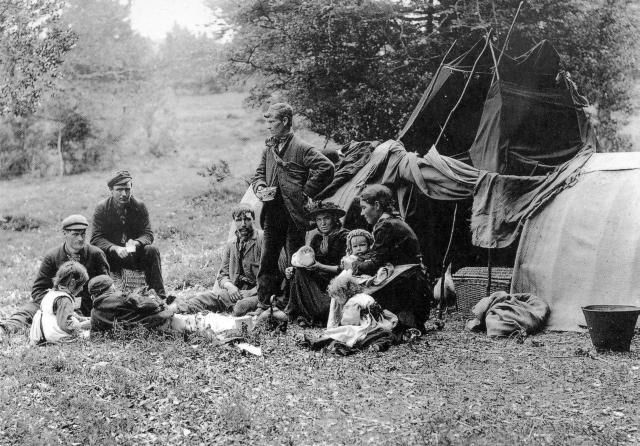
Two months later and Channel 4’s My Big Fat Gypsy Wedding is generating waves on television. While sympathetic and giving a voice to Gypsy Travellers, it nevertheless presents an exoticised image of their lives: the horse-drawn wagons, extravagant dresses and flamboyant wedding arrangements seem to encapsulate how they remain the ‘other’ of British society. As the opening voiceover put it: ‘For hundreds of years the Gypsy way of life was one of ancient traditions and simple tastes. Then their world collided with the 21st century. With unprecedented access to the UK’s most secretive community … this series will take you to the very heart of Gypsy life.’ If contemporary images of Gypsy Travellers seem to be polarised between vilification and the exotic, can the same be said for historical depictions of one of Britain’s oldest minority groups?
While the details remain contested, it is now broadly agreed that Europe’s Roma and Gypsy populations can trace their origins back to an Indian diaspora in the tenth century, with ‘Egyptians’ arriving in Britain by the early 16th century. Despite persecution, Gypsies established themselves, finding niches in both town and countryside, sometimes being protected by landowners who found them useful as a supply of casual labour, for entertainment and sometimes simply by the inconsistent application of the law. Their treatment reflected majority society’s deep ambivalence about the presence of Gypsies and a nomadic way of life. On the one hand it symbolised freedom from the responsibilities and duties associated with settled lifestyles – typified in folk songs such as ‘The Raggle-taggle Gypsy’; on the other it provoked an almost visceral hatred, a suspicion that Gypsies could evade the law and the codes of behaviour that bound settled society to a place and a parish.
Rather than being polar opposites, however, we might understand these stereotypes as two sides of a coin – as the product of a tendency to view Gypsy lives through the lens of the preoccupations and assumptions of mainstream society – rather than being grounded in reality. Whether articulated positively or negatively these stereotypes stem from the assumption that Gypsies were irredeemably separate from the rest of the population.
Yet, contrary to these stereotypes, Gypsies and Travellers traded with, worked and lived alongside the rest of the population: an analysis of the traditional songs sung by Gypsies and Travellers, for example, shows significant overlap with those current in wider society, suggesting a high degree of interaction between the communities, particularly in casual agricultural and seasonal labour. Arthur Harding’s classic account of the East End underworld at the beginning of the 20th century, compiled by the historian Raphael Samuel, revealed in passing how Gypsy Travellers were part of the everyday fabric of poor urban life. David Mayall’s work on the 19th century, my own on the 20th and that of the Dutch scholars Lucassen, Willems and Cottars for the European context all confirm the ways in which the lives of Gypsy Travellers and settled populations were intimately interconnected and often how the lines between them were in fact blurred. Gypsies lived in peri-urban encampments or even cheap lodging in cities over winter alongside working-class populations, making and selling goods, moving in regular circuits across the countryside in the spring and summer, picking up seasonal work, hawking and attending fairs. Far from being ‘a separate people’, their economic survival in fact depended on close engagement with the wider population.
The stereotypes became increasingly entrenched over the course of the 19th century as Britain’s population became increasingly urbanised and the countryside became the repository for the working out of anxieties related to the rapidly changing social and physical landscape. Alongside phenomena like the folk song revival, the cult of the ‘outdoors’ and the early caravanning movements there emerged a movement of amateur ‘gentlemen scholars’, self-styled ‘gypsiologists’, who developed an interest in recording the origins, language and customs of Britain’s Gypsy Travellers. Focused around the activities of the Gypsy Lore Society (GLS), established in 1889, they became preoccupied with the foreign ancestry of British Gypsies and with developing theories about their ‘pure bred’ nature, which often tied blood lines to Romany language use and ‘proper’ nomadic living. The Gypsy caravan, which had only made its appearance in the 1830s as a result of the improving road system, became central to settled society’s image of ‘the Gypsy’, in part through paintings, such as those of the prominent GLS member Augustus John. Fed by an outpouring of writings on the subject from the 1880s, popular imagination saw Gypsies as a people who turned up out of the blue, camped on commons or byways in their bow-topped caravan, grazed horses, sold pegs, perhaps ‘tinkering’, ‘here today and gone tomorrow’. Just as the producers of My Big Fat Gypsy Wedding promised ‘unprecedented access’, so too did numerous gypsiologists spend a summer living with a group of Gypsy Travellers gaining an insight into ‘the secret people’ before writing a book about their experiences. Crucially, such Gypsies were always portrayed as ‘pure blooded’ or ‘true’ Romanies, largely untouched by modern, industrialised Britain. As one gypsiologist, Arthur Symons, wrote in the early 20th century:
Why ... are we setting ourselves the impossible task of spoiling the Gypsies? ... they stand for the will of freedom, for friendship with nature, for the open air, for change and the sight of many lands; for all of us that are in protest against progress ... The Gypsies represent nature before civilisation ... the last romance left in the world.
Crucially, for these stereotypes to find resonance in modern Britain, gypsiologists constructed a theory around the decline in the racial purity of Gypsies as they increasingly mixed and married with ‘degenerate’ members of the settled population. They developed a racial hierarchy which placed ‘pure-blooded’ Gypsies, who were believed to speak the best Romany, at the top; followed by ‘didikais’, half-breeds, or ‘pikies’ – groups with varying proportions of Gypsy blood depending on which source one reads; and ‘mumpers’, who were vagrants with no Romany ancestry, at the bottom. As David Mayall observed:
To confuse the ‘true’ Gypsy with those of diluted blood was presented as a grave error that led to much injustice being directed towards the clean-living Romany. The latter, declining in numbers as the century progressed, were superior in manners, morals and occupations to their degenerate and impoverished ‘mumply-brothers’. These half-breeds were said to have inherited all the vices of the Romany and the Gaujo [non-Gypsy] but none of their virtues.
For gypsiologists anxious to discover a Golden Age and a pure Gypsy culture this outlook allowed them to pursue their pet theories, with any contradictory findings dismissed as the result of cultural pollution and miscegenation. This enabled gypsiologists to distance themselves from the squalid, urban Traveller encampments that existed around all Britain’s major cities and any other elements that impinged on romantic notions of a rural Gypsy idyll.
Just as the impetus to romanticise Gypsies gained ground in the later 19th century, so too did negative stereotypes, as a growing body of opinion saw Travellers as being out of step with modern society. Along with longstanding beliefs about the lazy and lawless nature of Gypsies came newer concerns about their unsanitary habits, which were seen as anachronistic in a nation that increasingly set store by its housing and sanitary legislation. Added to this were commonly expressed sentiments that they were escaping from paying taxes and consequently evaded the responsibilities that came with modern living. Such views gained ground particularly in times of social difficulty. During the Second World War Gypsies were a common scapegoat for the press, which depicted them as shirkers and deserters, able to escape conscription through their nomadism and evading rationing through poaching and foraging. As the South Wales Evening Post put it: ‘Many people wonder how Gypsies get off with food rationing. It is understood, however, that hedgehogs are not rationed.’
Lacking a political voice or a representative body Gypsy Travellers responded to this entrenchment of stereotypes not by challenging them but by working within their parameters. Thomas Acton first pointed to the practice of claiming to have ‘pure Gypsy blood’ as a means of asserting an individual’s right to travel, while scapegoating other travelling communities: ‘I’m a real Gypsy/Traveller/Romani, and we don’t do that, only the (ethnic category name with pejorative overtones)’. He observed that the effect of this ‘transference of blame’ was to divert the hostility of the accuser away from that particular individual to an absent outsider group which both parties could agree was fundamentally incapable of maintaining a nomadic lifestyle. While in the short run this was ‘an attractive strategy for the individual Traveller’, it was not without its shortcomings, as it served to confirm racialised definitions of
Travellers, equating a right to travel with spurious definitions of blood purity. It was not until the 1960s and the formation of the Gypsy Council that Gypsy Travellers as a community found a collective voice, one which tried to assert that all had a right to travel and that nomadism did have a place in modern Britain. While it scored some early successes, notably in the 1968 Caravan Sites Act, its influence both within and outside the travelling community has declined over recent years and has failed to dislodge the enduring stereotypes surrounding Gypsies.
Travellers have modernised alongside the rest of society and are not a ‘secret people’ living in the manner of their great grandparents. Crucially this change in their lifestyle has removed what settled society understands as the markers of ‘true’ Gypsies: bow-topped caravans, horses and so on. These images of Gypsies have become the rod with which their back is consistently beaten: failing to conform to romantic expectations, the stereotypes most often deployed in the popular press and by politicians are the negative ones relating to anti-social behaviour and an inability to adapt to the standards of ‘normal’ society.
This leads us back to the people of Dale Farm and the stars of My Big Fat Gypsy Wedding . We may wonder at the dresses and tut over wedding venues cancelling bookings when they find they are to host a Traveller wedding, but this translates into neither an understanding of the place of Gypsy Travellers in British society nor positive political action. Living in an ex-scrapyard by the side of a busy dual carriageway, the Dale Farm homes are immaculate trailers from which furniture-selling businesses are run. Vulnerable through their lack of romantic visual appeal and unable to attract political representation, Travellers are facing the active prejudice not just of Basildon Council but of councils across the country, which decide not only that Travellers may not stay on their own land, but are also determined that there is no place for a Traveller community within its district. It is surely time for us to move beyond the stereotypes which have served Gypsy Travellers, settled society and historical analysis so ill for centuries and instead have the strength to embrace the diversity and richness represented by Britain’s nomadic communities. Seeing 80 families being put onto the highway will be Britain’s shame as much as Sarkozy’s expulsion of Roma from France.
Becky Taylor is author of A Minority and the State: Travellers in Britain in the 20th Century (Manchester University Press, 2008).
Popular articles

Was Portugal’s Carnation Revolution Inevitable?

Slaying Myths: St George and the Dragon
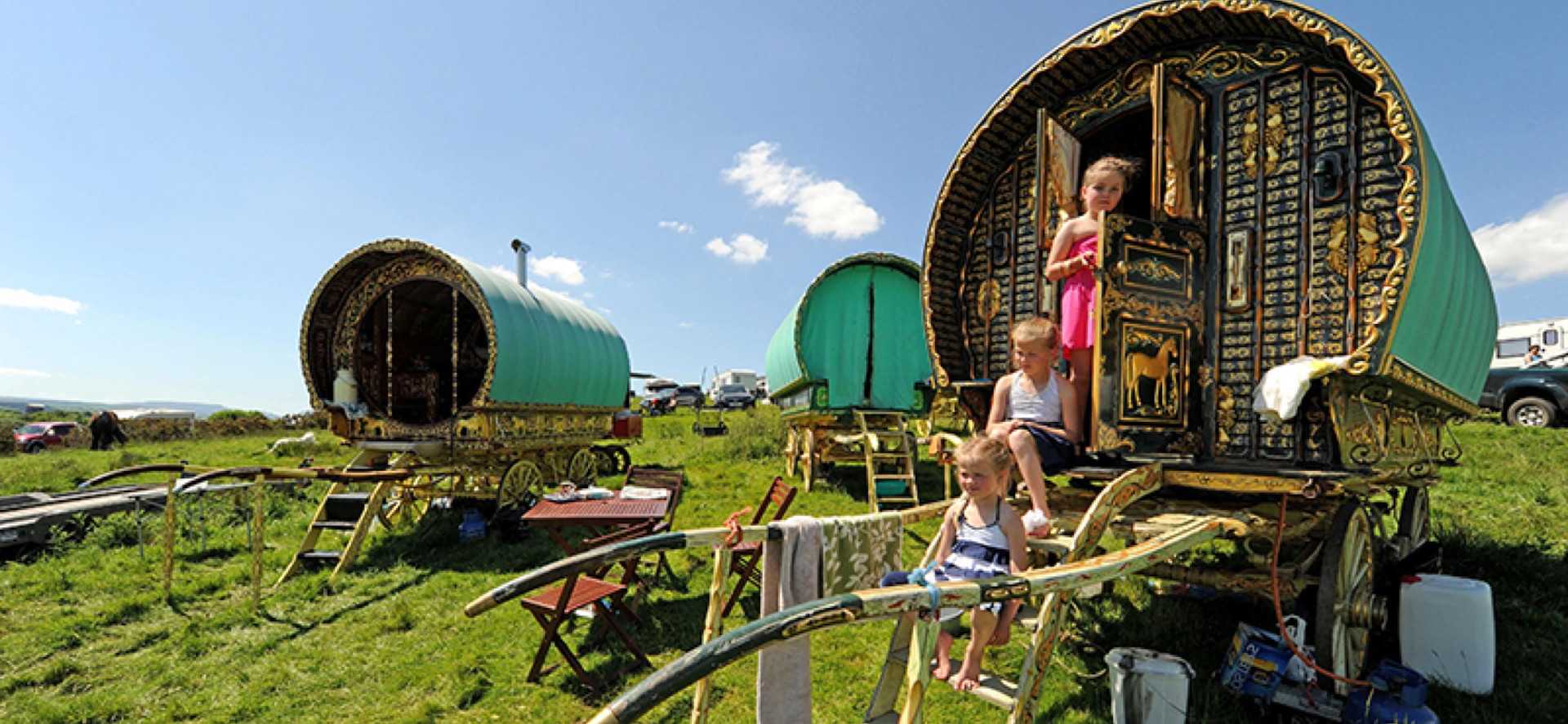
Welcome to the Traveller Movement
Events & activities.
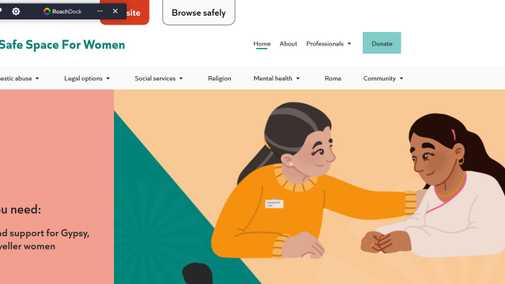
Traveller Movement Safe Space for Women Microsite
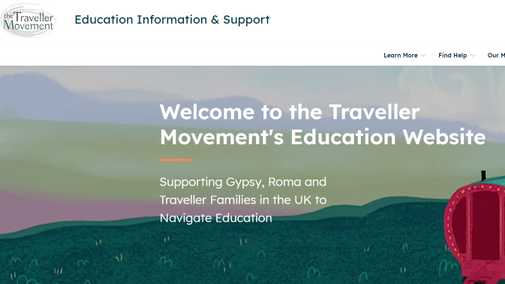
Traveller Movement Education Microsite
Traveller Movement Annual Conference: FUTURE VOICES
Thank you to everyone who attended the Traveller Movement Annual Conference 2023: Future Voices. Please find the 2023 Annual Conference Report here
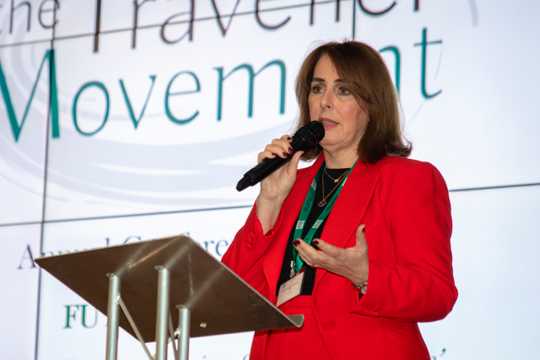
Charity Excellence Framework Quality Mark
The Charity Excellence Framework quality mark achieved by the Traveller Movement, provides demonstrable evidence to stakeholders and funders, of the Traveller Movement commitment to excellence, reassurance our trustees that our charity is well run and recognition for TM staff and volunteers for what they are achieving.

Recipe Book
This recipe book has both tradition and modern, sweet and savoury Traveller and Gypsy recipes from our Facebook group ‘Traveller and Gypsy Recipes and Tips’!
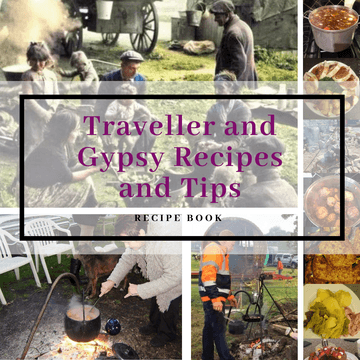
The Way We Work
Community Corner
Read all about the events, news updates and upcoming talent happening in your area!
Information and Support
We have a variety of helpful guides and useful information that will provide you with the support you need
Training and Consultation
We offer professional training and resources to Romani (Gypsy), Roma and Irish Traveller service providers
We address inequalities and discrimination that Romani (Gypsy), Roma and Irish Traveller people experience through our campaigns
- 25,000+ Overall social media followers
- 79,162 Website page views
- 1,017 Event participants this year
Testimonials
For a small organisation they punch well above their weight
Promoting a diverse range of futures for GRT members is vital in gaining greater visibility and wider societal change. The tutoring programme sounds like a great step in that direction!
Thanks so much to all involved; it was excellent training. It was eye-opening and I learned so much. The film was so powerful; I can see how much effort has gone into the film and the training.
Upcoming events
Know your rights session with southwark law centre external link icon.
Join The Traveller Movement and Southwark Law Centre on Tuesday 7th May 2024 between 2-3:30 PM. …
Know Your Rights Session with Howe & Co External Link Icon
Join The Traveller Movement and Southwark Law Centre on Thursday 23rd May 2024 between 2-3:30 PM. …
Know Your Rights Session with Simpson Millar External Link Icon
Join The Traveller Movement and Simpson Millar on Monday 29th April 2024 between 11-12:30 PM. …
Latest blogs

We are hiring!
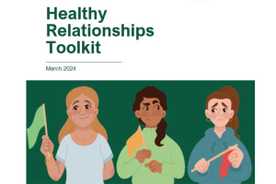
A TOOLKIT BY THE COMMUNITIES FOR THE COMMUNITIES
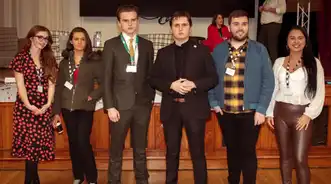
2023 Annual Conference Report released
Current campaigns.
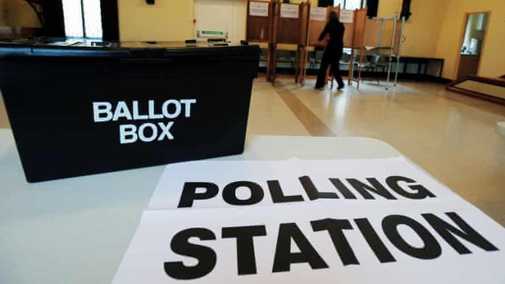
The Traveller Movement launched #OperationTravellerVote to ensure Gypsies, Roma and Travellers are registered to vote and most importantly, have their voices heard during elections.
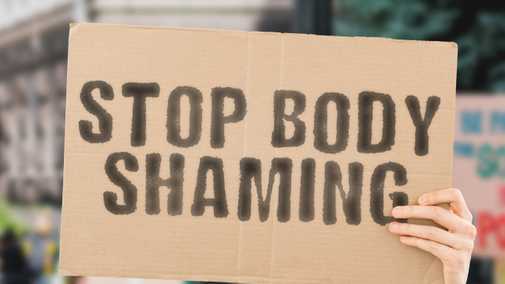
Stop Shaming
We challenge ‘shaming’ as the rise of social media channels allow public humiliation to persist which has been particularly harmful to young women
Subscribe to our newsletter
Can we store analytics cookies on your device?
Analytics cookies help us understand how our website is being used. They are not used to identify you personally.
You’ve accepted all cookies. You can change your cookie settings at any time.
- Ethnicity facts and figures homepage Home
Gypsy, Roma and Irish Traveller ethnicity summary
Updated 29 March 2022
1. About this page
2. the gypsy, roma and traveller group, 3. classifications, 4. improving data availability and quality, 5. population data, 6. education data, 7. economic activity and employment data.
- 8. Home ownership data data
- 9. Health data
This is a summary of statistics about people from the Gypsy, Roma and Traveller ethnic groups living in England and Wales.
It is part of a series of summaries about different ethnic groups .
Gypsy, Roma and Traveller (GRT) is a term used to describe people from a range of ethnicities who are believed to face similar challenges. These groups are distinct, but are often reported together.
This page includes:
- information about GRT data and its reliability
- some statistics from the 2011 Census
- other statistics on the experiences of people from the GRT groups in topics including education, housing and health
This is an overview based on a selection of data published on Ethnicity facts and figures or analyses of other sources. Some published data (for example, on higher education) is only available for the aggregated White ethnic group, and is not included here.
Through this report, we sometimes make comparisons with national averages. While in other reports we might compare with another ethnic group (usually White British), we have made this decision here because of the relatively small impact the GRT group has on the overall national average.
The term Gypsy, Roma and Traveller has been used to describe a range of ethnic groups or people with nomadic ways of life who are not from a specific ethnicity.
In the UK, it is common in data collections to differentiate between:
- Gypsies (including English Gypsies, Scottish Gypsies or Travellers, Welsh Gypsies and other Romany people)
- Irish Travellers (who have specific Irish roots)
- Roma, understood to be more recent migrants from Central and Eastern Europe
The term Traveller can also encompass groups that travel. This includes, but is not limited to, New Travellers, Boaters, Bargees and Showpeople. (See the House of Commons Committee report on Tackling inequalities faced by Gypsy, Roma and Traveller communities .)
For the first time, the 2011 Census ethnic group question included a tick box for the ethnic group ‘Gypsy or Irish Traveller’. This was not intended for people who identify as Roma because they are a distinct group with different needs to Gypsy or Irish Travellers.
The 2021 Census had a ‘Gypsy or Irish Traveller’ category, and a new ‘Roma’ category.
A 2018 YouGov poll found that 66% of people in the UK wrongly viewed GRT not to be an ethnic group, with many mistaking them as a single group (PDF). It is therefore important that GRT communities are categorised correctly on data forms, using separate tick boxes when possible to reflect this.
The 2011 Census figures used in this report and on Ethnicity facts and figures are based on respondents who chose to identify with the Gypsy or Irish Traveller ethnic group. People who chose to write in Roma as their ethnicity were allocated to the White Other group, and data for them is not included here. Other data, such as that from the Department for Education, includes Roma as a category combined with Gypsy, with Irish Traveller shown separately.
The commentary in this report uses the specific classifications in each dataset. Users should exercise caution when comparing different datasets, for example between education data (which uses Gypsy/Roma, and Irish Traveller in 2 separate categories) and the Census (which uses Gypsy and Irish Traveller together, but excludes data for people who identify as Roma).
Finally, it should be noted that there is also a distinction that the government makes, for the purposes of planning policy, between those who travel and the Gypsy, Roma and Traveller ethnicities. The Department for Communities and Local Government (at the time, now the Department for Levelling Up, Housing and Communities) planning policy for traveller sites (PDF) defines "gypsies and travellers" as:
"Persons of nomadic habit of life whatever their race or origin, including such persons who on grounds only of their own or their family’s or dependants’ educational or health needs or old age have ceased to travel temporarily, but excluding members of an organised group of travelling showpeople or circus people travelling together as such."
This definition for planning purposes includes any person with a nomadic habit, whether or not they might have identified as Gypsy, Roma or Traveller in a data collection.
The April 2019 House of Commons Women and Equalities Select Committee report on inequalities faced by Gypsy, Roma and Traveller communities noted that there was a lack of data on these groups.
The next section highlights some of the problems associated with collecting data on these groups, and what is available. Some of the points made about surveys, sample sizes and administrative data are generally applicable to any group with a small population.
Improving data for the Gypsy, Roma and Traveller populations, as well as other under-represented groups in the population is part of the recommendations in the Inclusive Data Taskforce report and the key activities described in the ONS response to them. For example, in response to recommendation 3 of the report, ONS, RDU and others will "build on existing work and develop new collaborative initiatives and action plans to improve inclusion of under-represented population groups in UK data in partnership with others across government and more widely".
Also, the ONS response to recommendation 4 notes the development of a range of strategies to improve the UK data infrastructure and fill data gaps to provide more granular data through new or boosted surveys and data linkage. Recommendation 6 notes that research will be undertaken using innovative methods best suited to the research question and prospective participants, to understand more about the lived experiences of several groups under-represented in UK data and evidence, such as people from Gypsy, Roma and Traveller groups.
4.1 Classifications
In some data collections, the option for people to identify as Gypsy, Roma or Traveller is not available. Any data grouped to the 5 aggregated ethnic groups does not show the groups separately. Data based on the 2001 Census does not show them separately as there was no category for people identifying as Gypsy, Roma or Traveller. As part of our Quality Improvement Plan, the Race Disparity Unit (RDU) has committed to working with government departments to maintain a harmonised approach to collecting data about Gypsy, Roma and Traveller people using the GSS harmonised classification. The harmonised classification is currently based on the 2011 Census, and an update is currently being considered by the Office for National Statistics (ONS).
In particular, RDU has identified working with DHSC and NHS Digital colleagues as a priority – the NHS classification is based on 2001 Census classifications and does not capture information on any of the GRT groups separately (they were categorised as White Other in the 2001 Census). Some of these issues have been outlined in the quarterly reports on progress to address COVID-19 health inequalities .
Research into how similar or different the aggregate ethnic groups are shows how many datasets are available for the GRT group.
Further information on the importance of harmonisation is also available.
4.2 Census data
A main source of data on the Gypsy and Irish Traveller groups is the 2011 Census. This will be replaced by the 2021 Census when results are published by the ONS. The statistics in this summary use information from Ethnicity facts and figures and the Census section of ONS’s NOMIS website.
4.3 Survey data
It is often difficult to conclude at any one point in time whether a disparity is significant for the GRT population, as the population is so small in comparison to other ethnic groups.
Even a large sample survey like the Annual Population Survey (APS) has a small number of responses from the Gypsy and Irish Traveller ethnic group each year. Analysis of 3 years of combined data for 2016, 2017 and 2018 showed there were 62 people in the sample (out of around 500,000 sampled cases in total over those 3 years) in England and Wales. Another large survey, the Department for Transport’s National Travel Survey, recorded 58 people identifying as Gypsy or Traveller out of 157,000 people surveyed between 2011 and 2019.
Small sample sizes need not be a barrier to presenting data if confidence intervals are provided to help the user. But smaller sample sizes will mean wider confidence intervals, and these will provide limited analytical value. For the 2016 to 2018 APS dataset – and using the standard error approximation method given in the LFS User Guide volume 6 with a fixed design factor of 1.6 (the formula is 1.6 * √p(1 − p)/n where p is the proportion in employment and n is the sample size.) – the employment rate of 35% for working age people in the Gypsy and Traveller group in England and Wales would be between 16% and 54% (based on a 95% confidence interval). This uses the same methodology as the ONS’s Sampling variability estimates for labour market status by ethnicity .
A further reason for smaller sample sizes might be lower response rates. The Women and Select Committee report on the inequalities faced by Gypsy, Roma and Traveller communities noted that people in these groups may be reluctant to self-identify, even where the option is available to them. This is because Gypsy, Roma and Traveller people might mistrust the intent behind data collection.
The RDU recently published a method and quality report on working out significant differences between estimates for small groups using different analytical techniques.
4.4 Administrative data
While administrative data does not suffer from the same issues of sampling variability, small numbers of respondents can mean that data is either disclosive and needs to be suppressed to protect the identity of individuals, or results can fluctuate over time.
An example of this is the measure of students getting 3 A grades or better at A level . In 2019 to 2020, no Irish Traveller students achieved this (there were 6 students in the cohort). In 2017 to 2018, 2 out of 7 Irish Traveller students achieved 3 A grades, or 28.6% – the highest percentage of all ethnic groups.
Aggregating time periods might help with this, although data collected in administrative datasets can change over time to reflect the information that needs to be collected for the administrative process. The data collected would not necessarily be governed by trying to maintain a consistent time series in the same way that data collected through surveys sometimes are.
4.5 Data linkage
Linking datasets together provides a way of producing more robust data for the GRT groups, or in fact, any ethnic group. This might improve the quality of the ethnicity coding in the dataset being analysed if an ethnicity classification that is known to be more reliable is linked from another dataset.
Data linkage does not always increase the sample size or the number of records available in the dataset to be analysed, but it might do if records that have missing ethnicity are replaced by a known ethnicity classification from a linked dataset.
An example is the linking of the Census data to Hospital Episode Statistics (HES) data and death registrations by the ONS. The ethnicity classifications for GRT groups are not included in the HES data, and are not collected in the death registrations process at the moment. So this data linking gives a way to provide some information for Gypsy and Irish Travellers and other smaller groups. The report with data up to 15 May 2020 noted 16 Gypsy or Irish Traveller deaths from COVID-19.
RDU will be working with ONS and others to explore the potential for using data linking to get more information for the GRT groups.
4.6 Bespoke surveys and sample boosts
A country-wide, or even local authority, boost of a sample survey is unlikely to make estimates for the GRT groups substantially more robust. This is because of the relatively small number in the groups to begin with.
Bespoke surveys can be used to get specific information about these groups. The Department for Levelling Up, Housing and Communities list of traveller sites available through their Traveller caravan count statistics can help target sampling for surveys, for example. Bespoke surveys might be limited in geographical coverage, and more suitable for understanding GRT views in a local area and then developing local policy responses. An example of a bespoke survey is the Roma and Travellers in 6 countries survey .
Another method that could be useful is snowball sampling. Snowball sampling (or chain-referral sampling) is a sampling technique in which the respondents have traits that are rare to find. In snowball sampling, existing survey respondents provide referrals to recruit further people for the survey, which helps the survey grow larger.
There are advantages to snowball sampling. It can target hidden or difficult to reach populations. It can be a good way to sample hesitant respondents, as a person might be more likely to participate in a survey if they have been referred by a friend or family member. It can also be quick and cost effective. Snowball sampling may also be facilitated with a GRT community lead or cultural mediator. This would help bridge the gap between the GRT communities and the commissioning department to encourage respondent participation.
However, one statistical disadvantage is that the sampling is non-random. This reduces the knowledge of whether the sample is representative, and can invalidate some of the usual statistical tests for statistical significance, for example.
All data in this section comes from the 2011 Census of England and Wales, unless stated otherwise.
In 2011, there were 57,680 people from the Gypsy or Irish Traveller ethnic group in England and Wales, making up 0.1% of the total population. In terms of population, it is the smallest of the 18 groups used in the 2011 Census.
Further ONS analysis of write-in responses in the Census estimated the Roma population as 730, and 1,712 people as Gypsy/Romany.
Table A: Gypsy, Roma and Traveller write-in ethnicity responses on the 2011 Census
Source: Census - Ethnic group (write-in response) Gypsy, Traveller, Roma, GypsyRomany - national to county (ONS). The figures do not add to the 57,680 classified as White: Gypsy/Traveller because Roma is included as White Other, and some people in the other categories shown will have classified themselves in an ethnic group other than White.
An ONS report in 2014 noted that variations in the definitions used for this ethnic group has made comparisons between estimates difficult. For example, some previous estimates for Gypsy or Irish Travellers have included Roma or have been derived from counts of caravans rather than people's own self-identity. It noted that other sources of data estimate the UK’s Gypsy, Roma and Traveller population to be in the region of 150,000 to 300,000 , or as high as 500,000 (PDF).
5.1 Where Gypsy and Irish Traveller people live
There were 348 local authorities in England and Wales in 2011. The Gypsy or Irish Traveller population was evenly spread throughout them. The 10 local authorities with the largest Gypsy or Irish Traveller populations constituted 11.9% of the total population.
Figure 1: Percentage of the Gypsy or Irish Traveller population of England and Wales living in each local authority area (top 10 areas labelled)
Basildon was home to the largest Gypsy or Irish Traveller population, with 1.5% of all Gypsy or Irish Traveller people living there, followed by Maidstone (also 1.5%, although it had a smaller population).
Table 1: Percentage of the Gypsy or Irish Traveller population of England and Wales living in each local authority area (top 10)
28 local authorities had fewer than 20 Gypsy or Irish Traveller residents each. This is around 1 in 12 of all local authorities.
11.7% of Gypsy or Irish Traveller people lived in the most deprived 10% of neighbourhoods , higher than the national average of 9.9% (England, 2019 Indices of Multiple Deprivation).
81.6% of people from the Gypsy or Irish Traveller ethnic group were born in England, and 6.1% in the other countries of the UK. 3.0% were born in Ireland and 8.3% were born somewhere else in Europe (other than the UK and Ireland). Less than 1.0% of Gypsy or Irish Traveller people were born outside of Europe.
5.2 Age profile
The Gypsy or Irish Traveller ethnic group had a younger age profile than the national average in England and Wales in 2011.
People aged under 18 made up over a third (36%) of the Gypsy or Irish Traveller population, higher than the national average of 21%.
18.0% of Gypsy or Irish Traveller people were aged 50 and above , lower than the national average of 35.0%.
Figure 2: Age profile of Gypsy or Irish Traveller and the England and Wales average
Table 2: age profile of gypsy or irish traveller and the england and wales average, 5.3 families and households.
20.4% of Gypsy or Irish Traveller households were made up of lone parents with dependent children , compared with 7.2% on average for England and Wales.
Across all household types, 44.9% of Gypsy or Irish Traveller households had dependent children, compared with an average of 29.1%.
8.4% of Gypsy or Irish Traveller households were made up of pensioners (either couples, single pensioners, or other households where everyone was aged 65 and over), compared with 20.9% on average.
All data in this section covers pupil performance in state-funded mainstream schools in England.
At all key stages, Gypsy, Roma and Irish Traveller pupils’ attainment was below the national average.
Figure 3: Educational attainment among Gypsy, Roma, Irish Traveller and pupils from all ethnic groups
Table 3: educational attainment among gypsy, roma, irish traveller and pupils from all ethnic groups.
Source: England, Key Stage 2 Statistics, 2018/19; Key Stage 4 Statistics, 2019/20; and A Level and other 16 to 18 results, 2020/21. Ethnicity facts and figures and Department for Education (DfE). Figures for Key Stage 2 are rounded to whole numbers by DfE.
6.1 Primary education
In the 2018 to 2019 school year, 19% of White Gypsy or Roma pupils, and 26% of Irish Traveller pupils met the expected standard in key stage 2 reading, writing and maths . These were the 2 lowest percentages out of all ethnic groups.
6.2 Secondary education
In the 2019 to 2020 school year, 8.1% of White Gypsy or Roma pupils in state-funded schools in England got a grade 5 or above in GCSE English and maths, the lowest percentage of all ethnic groups.
Gypsy or Roma (58%) and Irish Traveller (59%) pupils were the least likely to stay in education after GCSEs (and equivalent qualifications). They were the most likely to go into employment (8% and 9% respectively) – however, it is not possible to draw firm conclusions about these groups due to the small number of pupils in key stage 4.
6.3 Further education
Gypsy or Roma students were least likely to get at least 3 A grades at A level, with 10.8% of students doing so in the 2020 to 2021 school year. 20.0% of Irish Traveller students achieved at least 3 A grades, compared to the national average of 28.9%. The figures for Gypsy or Roma (61) and Irish Traveller (19) students are based on small numbers, so any generalisations are unreliable.
Due to the impact of the COVID-19 pandemic, the summer exam series was cancelled in 2021, and alternative processes were set up to award grades. In 2020/21 attainment is higher than would be expected in a typical year. This likely reflects the changes to the way A/AS level grades were awarded rather than improvements in student performance.
6.4 School exclusions
In the 2019 to 2020 school year, the suspension rates were 15.28% for Gypsy or Roma pupils, and 10.12% for Irish Traveller pupils – the highest rates out of all ethnic groups.
Also, the highest permanent exclusion rates were among Gypsy or Roma pupils (0.23%, or 23 exclusions for every 10,000 pupils). Irish Traveller pupils were permanently excluded at a rate of 0.14%, or 14 exclusions for every 10,000 pupils.
6.5 School absence
In the autumn term of the 2020 to 2021 school year, 52.6% of Gypsy or Roma pupils, and 56.7% of Irish Traveller pupils were persistently absent from school . Pupils from these ethnic groups had the highest rates of overall absence and persistent absence.
For the 2020 to 2021 school year, not attending in circumstances related to coronavirus (COVID-19) was not counted toward the overall absence rate and persistent absence rates.
Data in this section is from the 2011 Census for England and Wales, and for people aged 16 and over. Economic activity and employment rates might vary from other published figures that are based on people of working age.
47% of Gypsy or Irish Traveller people aged 16 and over were economically active, compared to an average of 63% in England and Wales.
Of economically active people, 51% of Gypsy or Irish Traveller people were employees, and 26% were self-employed. 20% of Gypsy or Irish Traveller people were unemployed, compared to an average for all ethnic groups of 7%.
7.1 Socio-economic group
Figure 4: socio-economic group of gypsy or irish traveller and average for all ethnic groups for people aged 16 and over, table 4: socio-economic group of gypsy or irish traveller and average for all ethnic groups for people aged 16 and over.
Source: 2011 Census
31.2% of people in the Gypsy or Irish Traveller group were in the socio-economic group of ‘never worked or long-term unemployed’. This was the highest percentage of all ethnic groups.
The Gypsy or Irish Traveller group had the smallest percentage of people in the highest socio-economic groups. 2.5% were in the ‘higher, managerial, administrative, professional’ group.
15.1% of Gypsy or Irish Traveller people were small employers and own account workers. These are people who are generally self-employed and have responsibility for a small number of workers.
For Gypsy or Irish Travellers, who were 16 and over and in employment, the largest group worked in elementary occupations (22%). This can include occupations such as farm workers, process plant workers, cleaners, or service staff (for example, bar or cleaning staff).
The second highest occupation group was skilled trades (19%), which can include farmers, electrical and building trades. The Gypsy or Irish Traveller group had the highest percentage of elementary and skilled trade workers out of all ethnic groups.

7.2 Employment gender gap
The gender gap in employment rates for the Gypsy or Irish Traveller group aged 16 and over was nearly twice as large as for all ethnic groups combined. In the Gypsy or Irish Traveller ethnic group, 46% of men and 29% of women were employed, a gap of 17%. For all ethnic groups combined, 64% of men and 54% of women were employed, a gap of 10%.
This is likely to be due to the fact that Gypsy or Irish Traveller women (63%) were about 1.5 times as likely as Gypsy or Irish Traveller men (43%) to be economically inactive, which means they were out of work and not looking for work.
7.3 Economic inactivity
There are a range of reasons why people can be economically inactive. The most common reason for Gypsy or Irish Travellers being economically inactive was looking after the home or family (27%). This is higher than the average for England and Wales (11%). The second most common reason was being long term sick or disabled (26%) – the highest percentage out of all ethnic groups.
8. Home ownership data
Figure 5: home ownership and renting among gypsy or irish traveller households and all households, table 5: home ownership and renting among gypsy or irish traveller households and all households.
Source: England, 2011 Census
In 2011, 34% of Gypsy or Irish Traveller households owned their own home, compared with a national average of 64%. 42% lived in social rented accommodation, compared with a national average of 18%.
In 2016 to 2017, 0.1% of new social housing lettings went to people from Gypsy or Irish Traveller backgrounds (429 lettings).
In 2011, a whole house or bungalow was the most common type of accommodation for Gypsy or Irish Traveller households (61%). This was lower than for all usual residents in England and Wales (84%).
Caravans or other mobile or temporary homes accounted for 24% of Gypsy or Irish Travellers accommodation, a far higher percentage than for the whole of England and Wales (0.3%).
The percentage of people living in a flat, maisonette or apartment was 15% for both Gypsy or Irish Travellers and all usual residents in England and Wales.
In 2011, 14.1% of Gypsy and Irish Traveller people in England and Wales rated their health as bad or very bad, compared with 5.6% on average for all ethnic groups.
In 2016 to 2017, Gypsy or Irish Traveller people aged 65 and over had the lowest health-related quality of life of all ethnic groups (average score of 0.509 out of 1). The quality of life scores for the White Gypsy or Irish Traveller ethnic group are based on a small number of responses (around 35 each year) and are less reliable as a result.
Ethnicity facts and figures has information on satisfaction of different health services for different ethnic groups. For the results presented below, the Gypsy or Irish Traveller figures are based on a relatively small number of respondents, and are less reliable than figures for other ethnic groups.
In 2014 to 2015 (the most recent data available), these groups were the most satisfied with their experience of GP-out-of-hours service , with 75.2% reporting a positive experience.
In 2018 to 2019, they were less satisfied with their experience of GP services than most ethnic groups – 73.0% reported a positive experience.
They were also among the groups that had least success when booking an NHS dentist appointment – 89.0% reported successfully booking an appointment in 2018 to 2019.
The Gypsy or Irish Traveller group were also less satisfied with their access to GP services in 2018 to 2019 – 56.9% reported a positive experience of making a GP appointment, compared to an average of 67.4% for all respondents.
Publication release date: 31 January 2022
Updated: 29 March 2022
29 March 2022: Corrected A-level data in Table 3, and All ethnic groups data in Table 4. Corrected the legend in Figure 1 (map).
31 January 2022: Initial publication.
Research your roots and learn about your heritage.
- Research Guides
- 1891 Census Transcriptions
- Romany Routes Back Issues and Indexes
- Family Histories
- Reprints of Classic Books
- History and Lifestyle
- Free records
- Privacy Statement
Searching for information about your Gypsy, Traveller or Fairground ancestors? Perhaps our free records can help. We’re building up collections of extracts from parish registers, birth, marriage and death certificates and other sources that we’ll add regularly to this page. So please check back soon. And if you have any to share, please contact us.
NEW! The Keith Chandler Collection of Romany and Traveller Biographies Phase 1: Surnames A and C
Whatever the surname of your Romany or Traveller ancestors, you are sure to find a reference or two in this new Collection – and in some cases a complete mini-biography. Keith Chandler was originally on the hunt for Romany musicians but couldn’t resist also collecting and researching other travelling people he came across. The result is a Collection of thousands of individuals that Keith has kindly donated to the RTFHS for everyone to share and gain from. The surnames starting A to B – launched on 2 April 2024 – will be joined by other letters of the alphabet every three to four weeks. So please check back often.
NEW! Directory of Travelling Photographers Part 1: 1841-1881
If your travelling ancestors gave their occupation as ‘photographer’ in historic documents, turn to this new Directory of Travelling Photographers researched and created by RTFHS member Chy Hersey for information on what the role involved plus a register of some of the people who followed it in the period from the invention of photography to the year 1881.
UPDATED: Free supplement to two books by Tony Dixon about his Ayres and Smiths
Yet More Evidence is a free supplement to the two books already published by Tony Dixon about his Ayres and Smith ancestors. It brings together the new information that the author has discovered about his family since 2019. This PDF document is yours to read on screen or to print out at no charge:
YET MORE EVIDENCE Edition4
Updated in March 2022, this latest edition has grown to 48 pages and now also includes a list of chapters and a name index. There are a number of black-and-white family photographs. Please allow a short time for the document to open on your screen.
The two original books by Tony Dixon are But for a Little More Evidence – a Family History of William Ayres, Gypsy, 1806-1872 and But for Further Evidence: The Continuing Family History of William Ayres, Gypsy . Both are available to buy from the RTFHS: find out more about them on this page.
The Ian Orchard West Country Collection
This Collection represents many decades of diligent research by Ian Orchard, a long-standing member of the Romany and Traveller Family History Society. Ian wanted to preserve his information about his family and also share it more widely by making it available through this website as a PDF document that can be read on screen or printed out.
Ian’s Romany Gypsy ancestors originated and lived and travelled mainly in the West Country – Cornwall, Devon, Wiltshire, Dorset, Gloucestershire and Somerset – but also in neighbouring counties across southern England: from Hampshire, Berkshire and Oxfordshire to Sussex and Kent.
The main family surnames included in this Collection are: Burr • Crocker • Davis • Hughes • James • Mills • Orchard • Penfold • Sanders/Saunders • Scarrott • Small • Yearly
Articles from past editions of the RTFHS journal, Romany Routes
Gypsies in Wales in 1911 – approaches to searching : a survey of Romanies and Travellers found in the census in Wales in 1911, using a variety of search techniques. This article was originally published in the March 2021 edition of Romany Routes with brief references to the individuals found. It is re-published here with the complete list of finds made by the author.
Free online copies of out-of-print RTFHS publications
To celebrate the 25th anniversary of the RTFHS in 2019, we started to make available here books published by the Society that have been out of print for several years. These are free for you to read online or print out for yourself.
The first book in this free series is our An RTFHS South Country Family Album, originally published in 2007 . This is a fine collection of old photographs kindly contributed by RTFHS members, showing members of their own families. These are mainly people who lived in or travelled in the southern counties of England, stretching from Kent to Cornwall, in the past 100 years or so. The book is in two parts. As the files are large, please allow a few seconds for each part to open on your screen.
We have also provided a separate index to the full names of the people who appear in the book. Including maiden names, they are: Anderson, Ayres, Bailey, Ball, Barney, Black, Bowers, Brown, Butcher, Camfield, Cole, Collins, Cooper, Couch, Cranfield, Crutcher, Doe, Giles, Gobey, Greenstreet, Griggs, Hawkins, Holmes, Hope, Hughes, James, Keet, Martin, Matthews, Mitchell, Norris, Orchard, Othen, Penfold, Pidgley, Rawlings, Renals, Roberts, Sanders, Saunders, Silmon, Small, Smith, Stanley, Swallow, Taylor, Walker, Walton, White and Woods.
An RTFHS South Country Family Album Name Index An RTFHS South Country Family Album Part 1 An RTFHS South Country Family Album Part 2
Records from across the UK
The RTFHS Baptism/Birth Index The RTFHS Marriage Index The RTFHS Burial/Death Index
Records from individual English counties
- The Berkshire Travellers Parish Register Collection
Lincolnshire
- The Lincolnshire Travellers Birth, Marriage and Death Certificates and Parish Register Collection
Oxfordshire
The Oxfordshire Travellers Parish Register Collection
- The Wiltshire Travellers Parish Register Collection
Census records for large encampments of Gypsies and Travellers in English counties
Census transcriptions – large encampments
Just starting out in family history research? Our 8-step guide can show you the way.
Was your ancestor a gypsy use these clues to help you decide., or is your family tree in one of our publications see what’s available here ..
This page last updated: 1 April 2024.
- Census transcriptions – large encampments
- Directory of Travelling Photographers 1841-1881
- Family History Database
- Signposts: useful family history sources, county by county
- The Keith Chandler Collection of Romany and Traveller Biographies
- The Mills family of Battersea, London
- The Oxfordshire Travellers Parish Register Collection
- Tracing your WW1 ancestors
- Will you help your Society? Become a ‘remote Committee Member’
- Will you help your Society? Become a Routes Regional Reporter
- Will you help your Society? Join the Committee
- Was your ancestor a Gypsy?
- How to get started: your 8-step guide
- RTFHS baptism/birth index
- RTFHS marriage index
- RTFHS burial/death index
- Useful links: specialist family history sources
- Useful links: general family history sources
Publications
- Members’ Email Group
- The Robert Dawson Romany Collection
Follow us on Facebook!
RTFHS © Copyright 2024. All rights reserved.
Turn autoplay off
Turn autoplay on
Please activate cookies in order to turn autoplay off
- Jump to content [s]
- Jump to comments [c]
- Jump to site navigation [0]
- Jump to search [4]
- Terms and conditions [8]
- Press office
- Guardian Print Centre
- Guardian readers' editor
- Observer readers' editor
- Terms of service
- Privacy policy
- Advertising guide
- Digital archive
- Digital edition
- Guardian Weekly
- Buy Guardian and Observer photos
Today's paper
- Main section
- G2 features
- Comment and debate
- Editorials, letters and corrections
- Other lives
- Film & music
- Environment
Every Gypsy and Traveller caravan site in England mapped and listed
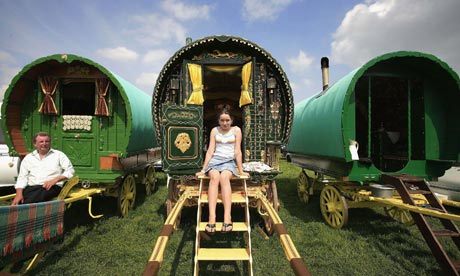
Official figures showing the number of Gypsy and Traveller caravan sites across England have been released today.
The report published by the Department for Communities and Local Government (DCLG) , is the most comprehensive count of local gypsy and caravan sites with details on total number of pitches and showing both those on authorised and unauthorised sites.
The number of those on authorised sites increased by 556 caravans since January 2010 with a total of 15,274 now being recorded. However the number of those on unauthorised sites saw a huge drop - down 26% on the previous year.
The decrease of unauthorised caravans was more pronounced on land not owned by Gypsies and Travellers with a large drop of 26% on the year with a much smaller decline of 8% on land that owned by either Gypsies or Travellers.
The total number of all sites across England only saw a marginal rise with 46 more caravans than in January 2010, making the total 18,383 in January 2011.
The data which also shows gypsy, traveller and travelling showpeople caravan sites by local authority, illustrates which areas of England have the highest concentration. The east of England recorded the highest number of caravans - 24% of the total number- then followed by the South East.
Cottingley Springs in Leeds has the highest caravan capacity of those recorded in England with the capacity of 120 whilst Duchy Road in Salford has the highest number of pitches at 61.
London and the North East recorded the lowest number of caravans. The Google Fusion map shows all the Gypsy, Traveller and travelling showpeople caravan sites across England and is colour coded to show the sites with the highest number of pitches (the red circles). The spreadsheet to download also shows the number of total caravan sites over the years. What can you do with this data?
Data summary
Download the data.
• DATA: download the full spreadsheet
More open data
Data journalism and data visualisations from the Guardian
World government data
• Search the world's government data with our gateway
Development and aid data
• Search the world's global development data with our gateway
Can you do something with this data?
• Flickr Please post your visualisations and mash-ups on our Flickr group • Contact us at [email protected]
• Get the A-Z of data • More at the Datastore directory • Follow us on Twitter • Like us on Facebook
- License/buy our content
- Terms & conditions
- Accessibility
- Inside the Guardian blog
- Work for us
- Join our dating site today
- © 2016 Guardian News and Media Limited or its affiliated companies. All rights reserved.


IMAGES
VIDEO
COMMENTS
Gypsy, Roma and Traveller (abbreviated to GRT) is an umbrella term used in the United Kingdom to represent several diverse ethnic groups which have a shared history of nomadism.The groups include Gypsies, defined as communities of travelling people who share a Romani heritage, resident in Britain since the 16th century; Ethnic Travellers, the traditional travelling people of Ireland and ...
Gypsies, Roma and Travellers have a rich and diverse culture. Gypsy Roma and Traveller people belong to minority ethnic groups that have contributed to British society for centuries. Their distinctive way of life and traditions manifest themselves in nomadism, the centrality of their extended family, unique languages and entrepreneurial economy.
Becky Taylor | Published in History Today Volume 61 Issue 6 June 2011. A Gypsy family camped in the New Forest, Hampshire in the 1890s A wet cold December day at Dale Farm Traveller site in Essex is yet another day spent waiting for a 28-day notice to evict the long established settlement. Less high profile than President Sarkozy's recent ...
There are around 300,000 Gypsy Roma and Irish Travellers in the UK - Roma Gypsies are originally from northern India, whereas Travellers are of Irish origin - and both groups are nomadic.
The Traveller Movement launched #OperationTravellerVote to ensure Gypsies, Roma and Travellers are registered to vote and most importantly, have their voices heard during elections. Stop Shaming We challenge 'shaming' as the rise of social media channels allow public humiliation to persist which has been particularly harmful to young women
Gypsies, Roma and Travellers protest in London, 2021, highlighting the social precariousness increased by a government bill clamping down on 'unauthorised encampments'. The bill got royal ...
There are around 300,000 Gypsies and Travellers in the UK, according to the charity Friends, Families and Travellers.
A demonstration of Roma, Gypsy and Traveller communities against the police, crime, sentencing and courts bill in London in July 2021. Photograph: James Veysey/Rex/Shutterstock
At the 2011 Census, the majority (76%) of Gypsies and Irish Travellers in England and Wales lived in bricks-and-mortar accommodation, and 24% lived in a caravan or other mobile or temporary structure. The total number of Traveller caravans in England in July 2018 was 22,662, an increase of 29% since July 2008.
Our new report by Dr Simon Ruston MRTPI looks at the planning system's approach to Gypsy and Traveller sites since 1960, with a specific focus from 1994 onwards. Strategic Plan 2023-2026 Our Strategic Plan is a guide to our key purpose and direction over the next three years, covering the period April 2023 to end March 2026.
Romani people in the UK are considered part of the Gypsy, Roma and Traveller (GRT) community. Romani people in the UK are predominantly Christian, with 71.8% of English and Welsh Romanies identifying as Christian in the 2021 census compared to 46.2% of the wider population.
Table 1 shows 77.1% of people who identified as Gypsy or Irish Traveller were born in England. This is very similar to the percentage of the England and Wales population who were born in England (77.3%). "Other Europe" had the second-highest percentage for people who identified as Gypsy or Irish Traveller (14.7%, compared with 6.4% for the ...
Similarly, "non-Traveller", and "non-Gypsy" are also used to refer to others outside Gypsy and Traveller communities as is "the settled community", although it is important to note that Gypsies and Travellers may also live in settled accommodation in the wider community, attend schools, colleges and universities, and work in a range ...
2 What we know about inequalities facing Gypsy, Roma and Traveller communities Gypsy and Traveller communities in the UK. 10. Gypsy and Traveller people have been present in England since at least the 16th Century and the first recorded mention of Gypsies in England can be found in a document from 1514. 4 It has been suggested that the term "Gypsy" was coined due to a misapprehension that ...
Romanichals (UK: / ˈ r ɒ m ə n ɪ tʃ æ l / US: /-n i-/; more commonly known as English Gypsies) are a Romani subgroup within the United Kingdom and other parts of the English-speaking world. Most Romanichal speak Angloromani, a mixed language that blends Romani vocabulary with English syntax. Romanichals resident in England, Scotland, and Wales are part of the Gypsy, Roma, and Traveller ...
1 Briefing: Accommodation issues facing Gypsies and Travellers in England, March 2022 Key facts • There are around 300,000 Gypsies and Travellers in the United Kingdom. • Around ¾ of Gypsies and Travellers in England and Wales live in bricks and mortar accommodation and the remaining ¼ live in a caravan or other mobile
By gathering other types of information about a person or a family, it may be possible to confirm that you have Gypsy blood. There are four main characteristics to look out for in an individual: Typical Romany surname: common ones include Cooper, Smith, Lee, Boswell, Lovell, Doe, Wood, Young and Heron. But take a look at our Famous Families ...
It noted that other sources of data estimate the UK's Gypsy, Roma and Traveller population to be in the region of 150,000 to 300,000, or as high as 500,000 (PDF). 5.1 Where Gypsy and Irish Traveller people live There were 348 local authorities in England and Wales in 2011. The Gypsy or Irish Traveller population was evenly spread throughout them.
Articles from past editions of the RTFHS journal, Romany Routes Gypsies in Wales in 1911 - approaches to searching: a survey of Romanies and Travellers found in the census in Wales in 1911, using a variety of search techniques.This article was originally published in the March 2021 edition of Romany Routes with brief references to the individuals found.
For more information on cultural practices, please see Gypsies' and Travellers' lived experiences, culture and identities, England and Wales: 2022 bulletin. Central and local government participants also highlighted the need for more robust and timely data about Gypsy and Traveller communities to understand and plan more effectively to meet ...
The number of Gypsy and Traveller caravan sites across England has risen slightly with the East of England recording the highest number of sites. Find all the sites mapped by local authority
Controversial plans for a gypsy and traveller site on the edge of Hinckley have been refused for a second time. The original proposal was among the most complained about in Leicestershire in 2023. The proposal, put forward by Michael Winter, looked to turn vacant land, known as the Green Wedge, next to Hinckley's Newquay Close and the A47, into a site for four gypsy and traveller pitches ...
Surrey County Council agreed to replace the 15 utility blocks at the Kalima Gypsy, Roma, Traveller site in Chertsey Road. Cabinet members approved the project at a meeting on Tuesday.
In the 2021 Census of England and Wales, the Gypsy/Irish Traveller community numbered 67,757, or 0.1% of the population. The London Boroughs of Harrow and Brent contain significant Irish Traveller populations. In addition to those on various official sites, there are a number who are settled in local authority housing.